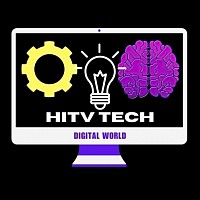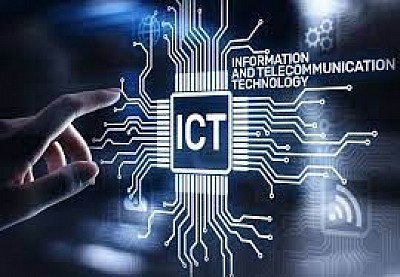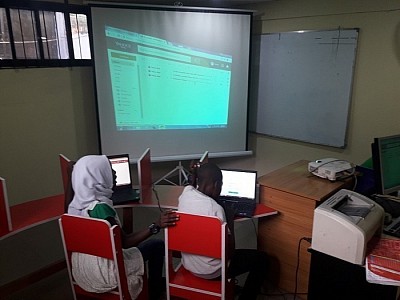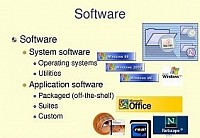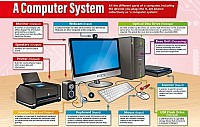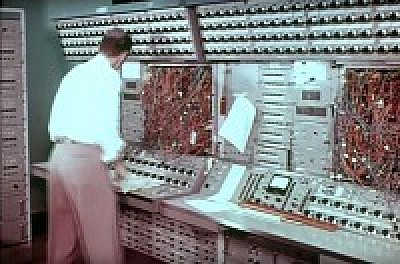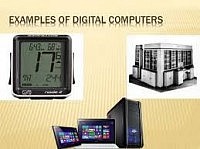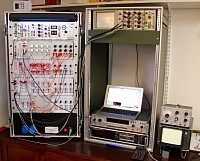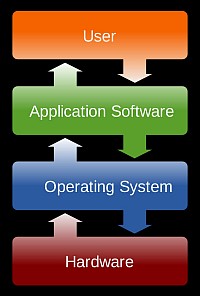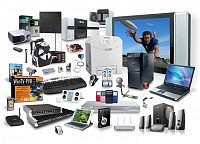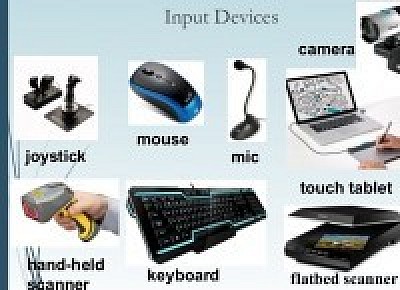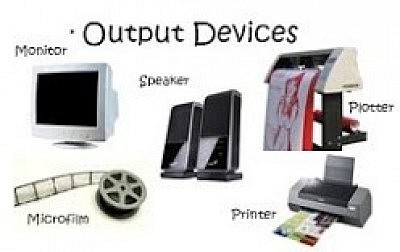Information and Communication Technology
ICT
Introduction to Information and Communication Technology (ICT)
- Introduction
Information and Communication Technology (ICT) has become an integral part of modern society, influencing virtually every aspect of our lives. From communication to education, business to entertainment, ICT plays a crucial role in shaping our daily interactions and experiences. In this comprehensive guide, we'll delve into the fundamentals of ICT, its components, significance, and its impact on various sectors.
- Understanding ICT
ICT encompasses a broad range of technologies used to manage, process, and communicate information. It involves the convergence of computing, telecommunications, and audiovisual media, enabling the seamless transmission and exchange of data across different platforms. At its core, ICT facilitates the collection, storage, retrieval, manipulation, and transmission of information.
- Components of ICT
1. Hardware: This includes physical devices such as computers, servers, routers, smartphones, and other peripherals necessary for processing and transmitting data.
2. Software: Software forms the programs and applications that run on hardware devices, enabling users to perform specific tasks. This includes operating systems, productivity software, communication tools, and more.
3. Networks: Networks are the infrastructure that enables the connectivity and communication between devices. This includes wired and wireless technologies such as the internet, LANs (Local Area Networks), WANs (Wide Area Networks), and cloud-based services.
4. Data: Data is the raw information processed and stored by ICT systems. It can take various forms, including text, images, audio, video, and more.
5. People: People are integral to the functioning of ICT systems, as users, developers, administrators, and stakeholders. Human interaction and decision-making drive the utilization and advancement of ICT.
Significance of ICT
1. Communication: ICT facilitates instant communication through various channels such as email, messaging apps, social media, and video conferencing, bridging geographical distances and enabling global connectivity.
2. Information Management: ICT enables efficient storage, retrieval, and manipulation of vast amounts of data, empowering organizations to make informed decisions and optimize their operations.
3. Education: ICT revolutionizes the way education is delivered and accessed, providing online learning resources, interactive multimedia content, and collaborative tools for students and educators.
4. Business: In the business world, ICT enhances productivity, streamlines processes, and enables global reach through e-commerce, digital marketing, customer relationship management (CRM), and enterprise resource planning (ERP) systems.
5. Healthcare: ICT innovations in healthcare include electronic medical records (EMRs), telemedicine, medical imaging technologies, and wearable devices, improving patient care, diagnosis, and treatment outcomes.
6. Entertainment: From streaming services to gaming platforms, ICT enriches entertainment experiences through immersive content delivery, virtual reality (VR), augmented reality (AR), and interactive media.
Impact of ICT
1. Economic Impact: ICT fuels economic growth by driving innovation, creating new industries, and increasing productivity and efficiency across sectors. It enables businesses to reach new markets, reduce costs, and foster entrepreneurship.
2. Social Impact: ICT bridges social divides by providing access to information, education, and opportunities to marginalized communities. It facilitates social networking, civic engagement, and cultural exchange on a global scale.
3. Environmental Impact: While ICT offers environmental benefits such as reducing paper consumption and enabling remote work, it also poses challenges such as e-waste generation, energy consumption, and carbon emissions from data centers and ICT infrastructure.
- What is a communication device?
Communication devices are ICT devices.
ICT Devices
ICT devices are electronic devices that allow users to retrieve and convey messages or information.
The computer system is an example of ICT device. It can be said that a computer is the backbone of ICT.
Communication devices are the backbone of modern connectivity, enabling the exchange of information between individuals, groups, and machines across vast distances. These devices come in various forms, from traditional telephones to cutting-edge smartphones and beyond. Here, we'll explore some common communication devices that have played pivotal roles in shaping how we interact and share information.
1. Smartphones: Perhaps the most ubiquitous communication device of our time, smartphones have revolutionized how we connect with one another. They integrate various communication technologies such as voice calls, text messaging, email, and social media apps into a single, portable device. Smartphones also support internet browsing, allowing users to access a wealth of information and communicate in real-time from almost anywhere in the world.
2. Telephones: While landline telephones may seem archaic in the era of smartphones, they remain an essential communication device in many homes and businesses. Landlines provide reliable voice communication over a wired network and are often used for important conversations where clarity and stability are paramount. Additionally, smartphones have evolved from their predecessors, enabling users to make voice calls over cellular networks or internet protocols (VoIP).
3. Computers: Personal computers, laptops, and tablets are not only powerful tools for productivity and entertainment but also integral communication devices. They facilitate email correspondence, instant messaging, video conferencing, and collaboration through various software and online platforms. Additionally, computers serve as gateways to the internet, enabling access to a vast array of communication channels and information resources.
4. Two-Way Radios: Commonly used in industries such as public safety, transportation, and hospitality, two-way radios provide instant voice communication over short distances. They are robust, reliable, and well-suited for situations where cellular coverage may be limited or unreliable. Two-way radios come in handheld, mobile, and base station configurations, allowing seamless communication among individuals or teams within a designated area.
5. Wireless Communication Devices: Bluetooth headsets, wireless earbuds, and wearable devices like smartwatches are becoming increasingly popular for hands-free communication on the go. These devices connect wirelessly to smartphones or other compatible devices, enabling users to make calls, listen to music, and access voice assistants without the constraints of traditional wired accessories.
6. Satellite Phones: In remote or disaster-prone areas where conventional communication infrastructure is lacking or compromised, satellite phones provide a lifeline to the outside world. They rely on satellite networks to transmit voice and data signals, ensuring connectivity even in the most remote locations or during emergencies where terrestrial networks may be unavailable.
7. Intercom Systems: Commonly found in residential buildings, offices, and industrial facilities, intercom systems enable convenient communication between different areas or rooms within a building. They facilitate hands-free, two-way voice communication and may incorporate additional features such as video monitoring, access control, and integration with other security systems.
These are just a few examples of common communication devices that have become indispensable in our interconnected world. As technology continues to advance, we can expect further innovations that will redefine how we communicate and interact with one another.
Common Communication Devices
Common ICT devices are electronic devices for retrieving and conveying information. they are also devices that make our work easier and faster.
- Computer
- Laptop
- Smartphone
- Tablet
- Plotter
- Electronic billboard
- Digital camera
- Lighten
- Joystick
- Modem
- Projector
Computer System
Computer system can be defined as an electronic machine that accepts data through input devices (e.g. keyboard and mouse) ,processes data with processing device (e.g. CPU), stores it through storage devices ( e.g. hard disk, RAM, flash drive etc.), and produces result as an information through output device (e.g. monitor, printer and projector etc.).
simple and short definition of the computer are stated below:
"Computer are electronic machines that make our work easier and faster"
"Computer is devices that accept data, processes it, and gives result".
TYPE OF COMPUTER
- Analog computer
- Digital computer
- Hybrid computer
Analog Computer
Analog computer is computer devices that count or indicates unit using analogue signals. e.g wall clock, weight, beam balance, speedometer, thermometers, windowpane, e.t.c.
Digital Computer
DIGITAL COMPUTER
Digital computer are electronic devices that count in discrete numbers (0s and 1s). e.g digital Wristwatch, Computer,laptop,mobile phone,tablet,smartphone,electronic bill board,Tv set e.t.c.
Hybrid Computer
Hybrid computers are mechatronics or electromechanical devices that make use of analogue signal and count in discrete numbers. They are designed in such a way that they can work as analogue and digital devices.
the e.g. EGC machine, ATM machines
Element of Computer
Elements (component) that make up a computer system
Three components make up a computer system. without this element, the computer can never be a computer or well said it will not function as a computer system. these elements are stated below.
Elements of computer
- Hardware
- Software
- Humanware
I called them HSH.
Hardware
HARDWARE
Hardware is computer parts (devices)that can be seen physically with our eyes and also can be felt or touch.
Types of Hardware
input devices
output devices
Input Device
INPUT DEVICE:
These are electronic devices that allow data to flow into the computer system.
Input devices are used to send data to the computer.
Examples of input devices:
- Keyboard
- Mouse
- Lighten
- Joystick
- Digital camera
- Webcam
- Microphone
etc.
Output device
OUTPUT DEVICE
Output devices are electronic machines that showcase or displays processed data (Information) inform of softcopy or hardcopy.
They are devices, the computer uses to gives or prints out the result.
Examples of output devices:
Output devices
- Monitor
- Projector
- Printer
- Electronic billboard
- Speaker
- Automated teller machine (ATM)
e.t.c.
